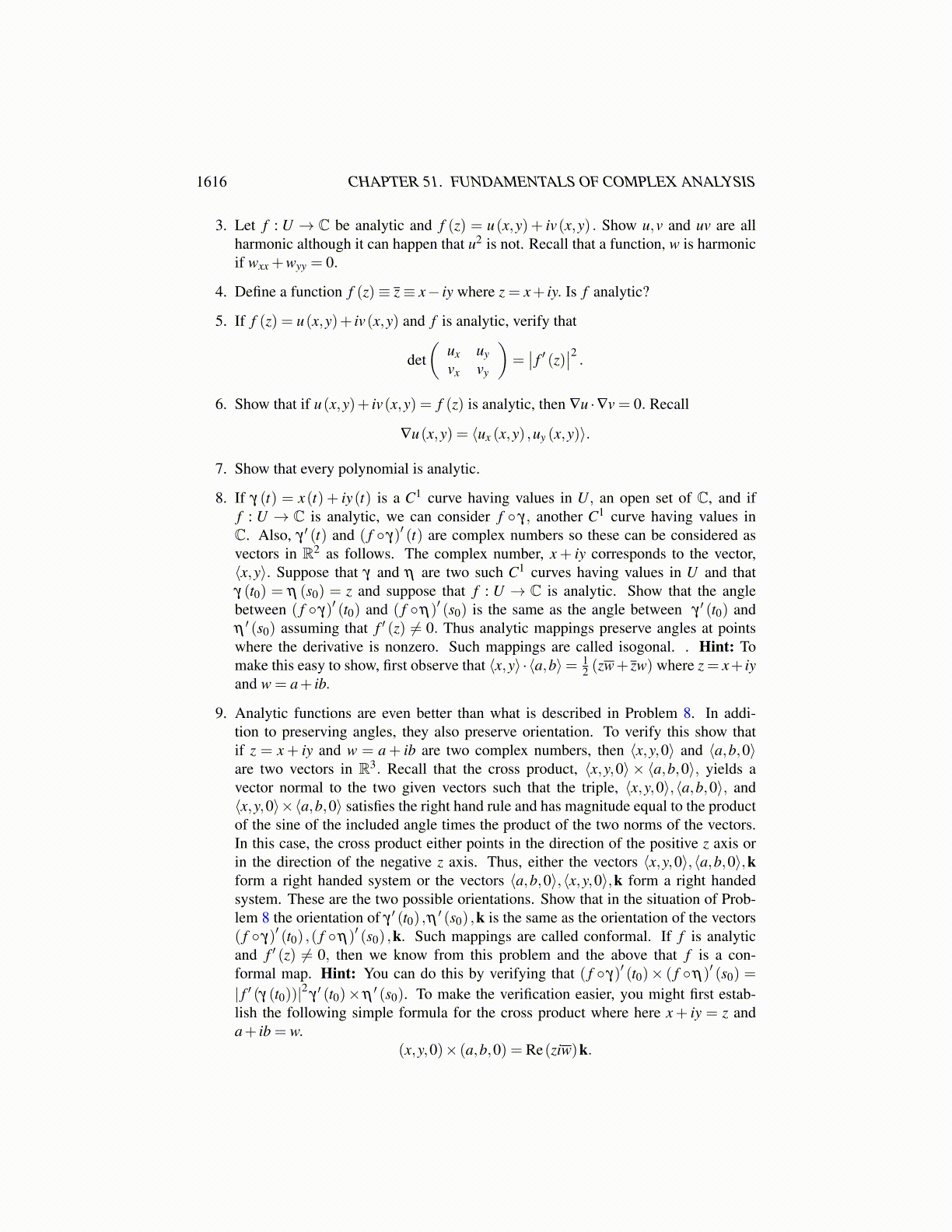
1616 CHAPTER 51. FUNDAMENTALS OF COMPLEX ANALYSIS
Then f is analytic if and only if u,v are C1 (Ω) and
∂u∂x
=∂v∂y
,∂u∂y
=−∂v∂x
.
Furthermore,
f ′ (z) =∂u∂x
(x,y)+ i∂v∂x
(x,y) .
Proof: Suppose f is analytic first. Then letting t ∈ R,
f ′ (z) = limt→0
f (z+ t)− f (z)t
=
limt→0
(u(x+ t,y)+ iv(x+ t,y)
t− u(x,y)+ iv(x,y)
t
)=
∂u(x,y)∂x
+ i∂v(x,y)
∂x.
But also
f ′ (z) = limt→0
f (z+ it)− f (z)it
=
limt→0
(u(x,y+ t)+ iv(x,y+ t)
it− u(x,y)+ iv(x,y)
it
)1i
(∂u(x,y)
∂y+ i
∂v(x,y)∂y
)=
∂v(x,y)∂y
− i∂u(x,y)
∂y.
This verifies the Cauchy Riemann equations. We are assuming that z→ f ′ (z) is continuous.Therefore, the partial derivatives of u and v are also continuous. To see this, note that fromthe formulas for f ′ (z) given above, and letting z1 = x1 + iy1∣∣∣∣∂v(x,y)
∂y− ∂v(x1,y1)
∂y
∣∣∣∣≤ ∣∣ f ′ (z)− f ′ (z1)∣∣ ,
showing that (x,y)→ ∂v(x,y)∂y is continuous since (x1,y1)→ (x,y) if and only if z1→ z. The
other cases are similar.Now suppose the Cauchy Riemann equations hold and the functions, u and v are
C1 (Ω) . Then letting h = h1 + ih2,
f (z+h)− f (z) = u(x+h1,y+h2)
+iv(x+h1,y+h2)− (u(x,y)+ iv(x,y))
We know u and v are both differentiable and so
f (z+h)− f (z) =∂u∂x
(x,y)h1 +∂u∂y
(x,y)h2+